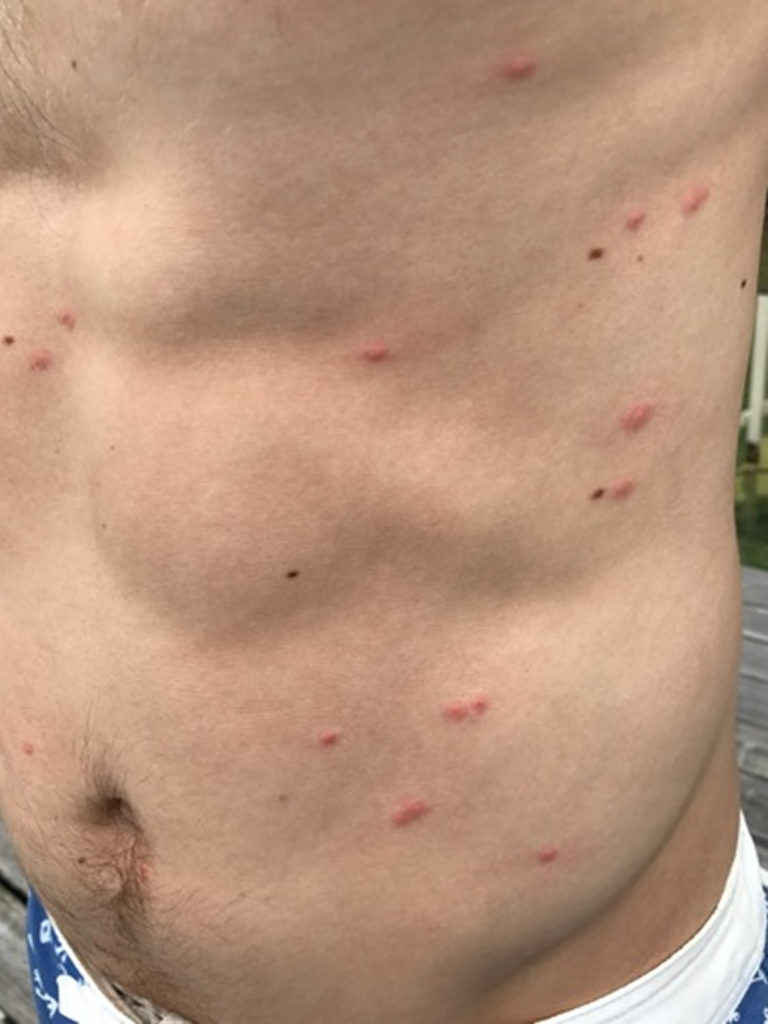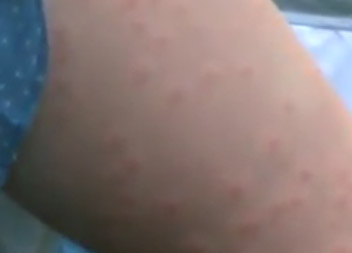
What is the treatment for sea bather's eruption?
#Swimmers itch from ocean skin#
Skin biopsy shows non-specific changes of perivascular and interstitial inflammation including eosinophils and neutrophils. Sea bather's eruption is usually a clinical diagnosis. Caution: An immediate rinse with fresh water, vinegar, or other solutions may cause additional stinging from organisms clinging to your skin or clothes. Do not rub the affected areas with a towel or hands as that could cause additional stinging. Pat-dry with a towel and dress in clean clothes. General experience indicates the infestation seems to occur near the surface of the water so snorkelers and swimmers seem to be the most vulnerable.įollowing possible exposure to the thimble jellyfish, the most effective preventive measure is to quickly remove the bathing costume and rinse the body in seawater that doesn't have the jellyfish.

Sometimes, a wet suit will limit exposure to the edges of the garment. People have tried various barrier creams to prevent the jellyfish from contacting the skin but creams do not provide a strong enough barrier to the stingers. Other than staying out of the water (or not wearing a swimming costume), not much can be done to completely avoid the jellyfish's sting if they are present in the water. The average duration of the rash is 1-2 weeks, but can persist for up to 1-2 months. The eruption seems to recur more severely in people who have had a previous episode. Each person may react differently to the stings depending on their sensitivity and previous exposure. It presents as vesicles, red papules, pustules, and urticarial weals which may become dense and run together in a mass. The rash usually starts a couple of hours after swimming. Itching can be quite severe and become painful. When taking a freshwater shower while still wearing the bathing suit, the itch gets worse. Some children also develop a tummy upset. Up to 20% of patients complain of feeling slightly unwell, with fever and fatigue.

It is generally confined under the swimming costume, particularly the tight-fitting areas, but can extend to exposed skin. Over several hours it becomes an itch, which can last for several weeks. What are the clinical features of sea bather's eruption?Ī tingling sensation under the bathing suit (breasts, groin, cuffs of wetsuits) may be first noticed while still in the water or soon after emerging. This is further supported by only a small proportion of people exposed develop the rash. A number of studies have shown high antibody levels to the jellyfish antigens, suggesting the reaction is an allergic response.

The initial stinging feeling is probably due to the toxin, however the subsequent rash is likely to be immune-mediated. Wearing bathing suits for prolonged periods after swimming, showering in fresh water, and mechanical stimulation (rubbing with a towel) make the eruption worse.

Pressure on the small jellyfish cause the stinging cells to discharge, releasing toxin into the skin. As the swimmer gets out of the sea, water drains out of the bathing suit, trapping the organisms between the suit and the skin. The rash typically develops underneath the bathing costume, which is believed to trap the jellyfish organisms against the skin. Each individual is equipped with a number of stinging cells, that can be triggered by simple mechanical pressure or by osmotic changes that occur with evaporation or when rinsing off with freshwater. The tiny animals become trapped underneath bathing suits or in the hair of the bather. It affects swimmers, snorkelers, or divers soon after getting out of the water. Most cases of sea bather's eruption occur during the summer as it seems to be dependant on water temperature. Sea thimbles are small tropical jellyfish that, even as adults, get no larger than about a centimetre in size. It is likely sea bather's eruption is due to different marine creatures in other parts of the world. It has also been reported in the Long Island area of New York State due to the larval stage of the sea anemone, Edwardsiella lineata. Most studies have been from the east coast of North and Central America where sea bather's eruption is a reaction to toxins released by all three free-swimming stages (ephyrae, medusae, and larvae) of the thimble jellyfish, Linuche unguiculata.


 0 kommentar(er)
0 kommentar(er)
